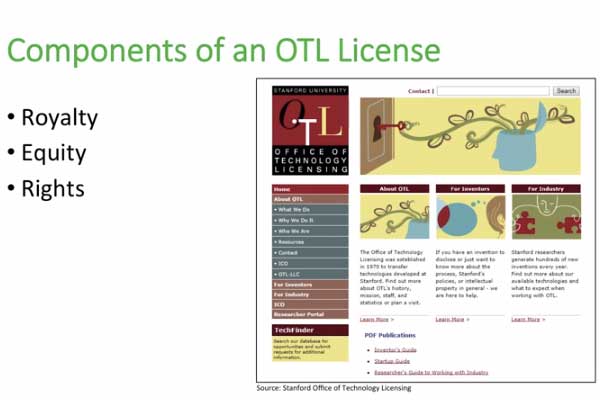Getting Started
While deciding whether or not to take an alternate development pathway is a major strategic decision, it does not have to be a frightening one. The following steps, along with some honest evaluation, can help innovators work through this important yet potentially exciting determination. These steps also outline a straightforward course of action for making a partnership, license, or acquisition happen.
Determine Whether or Not to Pursue an Alternate Pathway
What to Cover
Carefully consider whether or not it makes sense to pursue a stand-alone business given the innovator’s personal interests, skills, and circumstances. From a product perspective, evaluate if the market cannot reasonably be accessed, the product can stand on its own, and the alignment between the required investment to develop a product and the expected return of the most likely investors. Based on the results of this analysis, determine if an alternate development pathway is warranted and, if so, which pathway appears most promising.
Where to Look
Revisit 1.1 Strategic Focus and refer back to the results of the proxy company analysis performed as a part of 6.1 Operating Plan & Financial Model and 6.3 Funding Approaches.
Assess the Best Timing for a Transaction and Build Value Toward that Goal
What to Cover
Determine the optimal timing for involving another entity. Assess the value that the innovator and his/her idea bring to a potential transaction, including an assessment of people, IP, the market, the technology (prototypes and proof of concept), plans for clinical trials, regulatory, and reimbursement, and the financial model. Begin building value in the areas of greatest interest to prospective targets.
Where to Look
- Refer to competitive analysis performed as part of 2.4 Market Analysis.
- Review the annual reports of publicly traded companies in the field for details on deals that closed.
- Perform web searches for information about the timing of comparable deals.
Identify and Evaluate Targets
What to Cover
Identify the most promising targets and perform detailed due diligence on them. Research products, their experience in doing deals, their reputations, gaps in their product offerings that may make a deal viable, key contacts, how to gain an introduction, and how to create competition when it is time for the transaction.
Where to Look
- Review company profiles via databases such as Hoovers Online, OneSource’s U.S. Business Browser, Million Dollar Database, and Reference USA.
- Read analysts’ reports for publicly traded companies that could be potential targets.
- Seek input and ideas from members of the personal networks belonging to the innovator, board members, employees, and other advisors.
- Attend trade shows and conferences and visit booths of potential targets.
Prepare to Initiate Contact
What to Cover
Put together the right team to manage the process and perform negotiations. Prepare an information packet with confidential and non-confidential disclosures that can be shared in a progressive manner. Put together an NDA and have it ready to go. Think carefully about an appropriate BATNA.
Where to Look
- Getting to Yes: Negotiating Agreements Without Giving In by Roger Fisher, William Ury, and Bruce Patton (Houghton Mifflin Books, 1991).
- If getting a personal introduction is not possible, make arrangements to attend trade shows or other professional networking events where targeted companies will have managers and executives in attendance.
Manage the Process
What to Cover
Lay out a timeline for all critical activities and set milestone dates. Make contact with targets and communicate the timeline. Proactively manage targets through the process, including introductions, presentations and meetings, expressions of interest, detailed due diligence, negotiating terms, and closing the deal.
Where to Look
Make every effort to keep the process and timeline in synch with critical milestones in the company’s operating plan as described in 6.1 Operating Plan & Financial Model. Obtain advice from trusted advisors and legal counsel.



